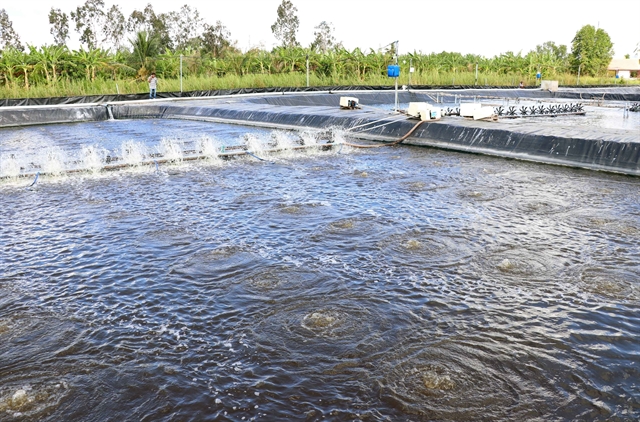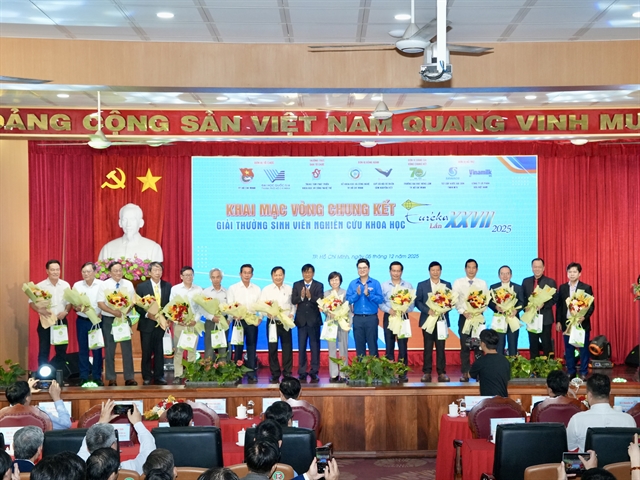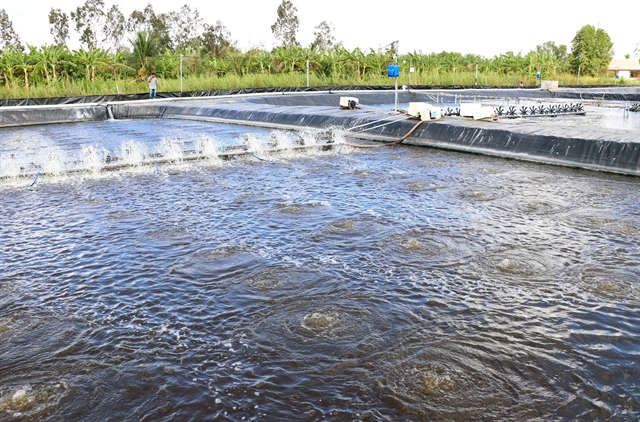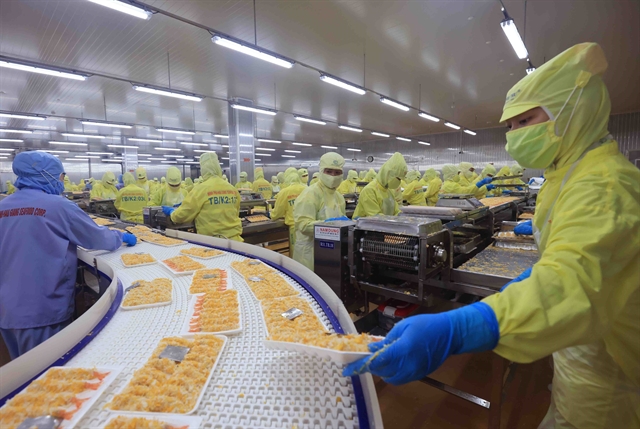 Society
Society

 |
| Super-intensive shrimp farming ponds in Cà Mau Province. — VNA/VNS Photo Huỳnh Anh |
CÀ MAU — Cà Mau is boosting shrimp farming development through linkages among stakeholders and expanding extensive and super-intensive farming methods.
The shrimp industry plays a key role not only in economic development but also in providing sustainable livelihoods for hundreds of thousands of households in the southernmost province.
Cà Mau, Việt Nam’s largest shrimp-producing province, has about 280,000ha of shrimp bred under five main farming models: industrial shrimp farming (semi-intensive, intensive, and super-intensive), advanced extensive farming, rice-shrimp farming, forest-shrimp farming, and integrated extensive farming.
Advanced extensive farming and super-intensive farming are two widely adopted models. The former covered around 166,000ha last year, while the latter reached about 5,042ha.
The province’s shrimp output reached 242,000 tonnes last year, with a total production value of about VNĐ7.48 trillion (US$290 million), accounting for nearly half of the province's agricultural production value, according to its Department of Agriculture and Environment.
The province’s shrimp export turnover last year stood at $1.12 billion, maintaining a consistent annual level above $1 billion.
Lê Văn Sử, deputy chairman of the Cà Mau Province People’s Committee, said the shrimp industry had seen positive changes in recent years.
The increasing application of technology in shrimp farming significantly improved productivity and output, he said.
However, the province’s shrimp sector still faced several challenges, including unsynchronised infrastructure, climate change impacts, environmental pollution, and disease outbreaks.
Growth target
 |
| Shrimp processing line for exports at Minh Phú Seafood Corp in Cà Mau Province. – VNA/VNS Photo Vũ Sinh |
To achieve its economic growth target of more than 8 per cent this year, Cà Mau has identified shrimp farming as a fundamental pillar.
Châu Công Bằng, deputy director of the province’s Department of Agriculture and Environment, said the province’s special directive on shrimp sector development was a crucial policy that set the direction for advanced extensive shrimp farming with a two-stage model, super-intensive farming, and linkage chains.
This would not only enhance export value but also act as a driving force for the shrimp sector to break through, affirming Cà Mau’s position in the international shrimp market, he said.
Phạm Thành Ngại, chairman of the province People’s Committee, emphasised the shrimp industry’s crucial role in local economic growth and urged seafood enterprises to link with farmers to enhance the value of Cà Mau shrimp, contributing to the province’s economic growth target of 8 per cent this year.
“Authorities at all levels, sectors, and localities should encourage shrimp farmers to shift their production mindset and actively participate in co-operative economic models to establish stable raw material supply and ensure clean, high-quality shrimp production,” he said.
According to Lê Văn Quang, chairman of Minh Phú Seafood Corp., Cà Mau shrimp has a competitive advantage thanks to its value-added products, which help maintain market share in demanding markets such as the US, EU, Japan, Australia, and South Korea.
“Cà Mau’s shrimp is not only remarkable for its large production volume but also for its superior quality, with many farming models meeting international certification standards, enhancing both environmental and social values,” he said.
However, the province’s shrimp sector was facing fierce competition from countries such as India, Ecuador, and Thailand due to its higher production costs compared to its competitors, he said.
To address this issue, Minh Phú had implemented a linkage chain model to support shrimp farmers, ensuring sustainable production and increasing product value, he said.
It would select shrimp farming households that wish to participate in its shrimp linkage chain and commit to farming shrimp correctly and sufficiently using MPBiO biological technology, he said.
It committed to purchasing all shrimp from its linked co-operatives at a price 5 per cent higher than its daily procurement price, he said.
This year, Cà Mau aims to expand its shrimp production linkages, develop advanced extensive shrimp farming to 127,600ha, which will be bred by 64,866 households and have an average yield of 550 kilogrammes per hectare per year.
Meanwhile, the super-intensive shrimp farming model is expected to reach 5,500ha, with an average productivity of 23 tonnes per hectare this year.
The department has proposed several key solutions to promote sustainable shrimp farming, including assessing the current situation to develop plans for increasing shrimp farming productivity; developing ecological, organic, and rice-shrimp farming models with certification to develop value chains and enhance added value; and reducing production costs and improving the efficiency of super-intensive shrimp farming.
The super-intensive shrimp farming model in Cà Mau has shown promising results, with a success rate of 70-80 per cent and a productivity exceeding 50 tonnes per hectare per crop. Farmers can produce 2-3 crops per year, significantly contributing to the province’s shrimp production targets, according to aquaculture experts. — VNS




.jpeg)